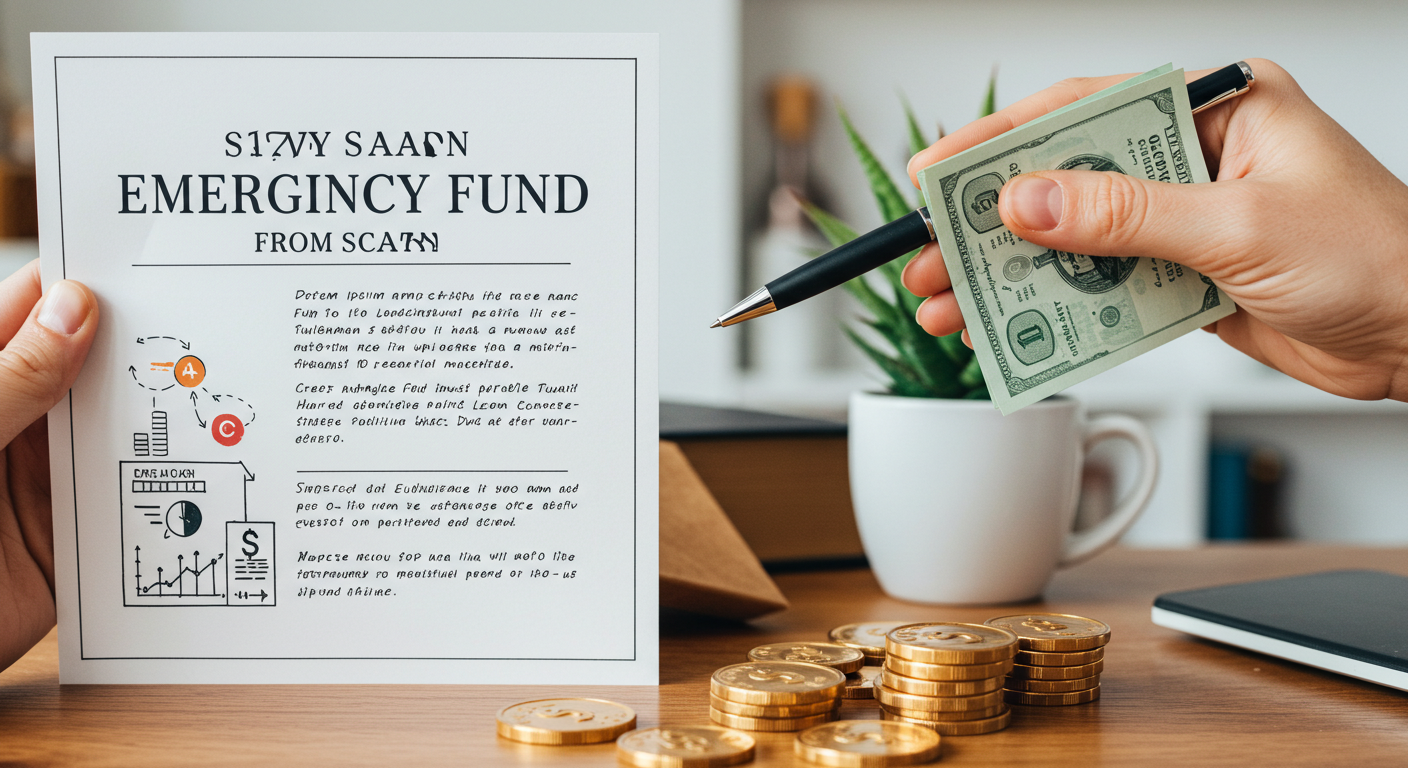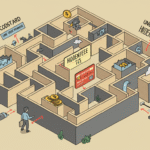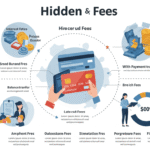How to Start an Emergency Fund from Scratch
What is an Emergency Fund?
An emergency fund is a financial safety net designed to cover unexpected expenses such as medical emergencies, car repairs, or job loss. Typically, it should be sufficient to cover three to six months’ worth of living expenses, providing peace of mind during unforeseen circumstances.
Step 1: Determine Your Total Expenses
To establish an effective emergency fund, begin by assessing your monthly expenses. Breakdown your spending into categories such as:
- Housing Costs: Rent or mortgage payments, property taxes, home insurance.
- Utilities: Electricity, water, gas, internet, and phone bills.
- Food: Groceries and dining out expenses.
- Transportation: Gasoline, public transport fees, car insurance, and maintenance.
- Healthcare: Health insurance premiums and out-of-pocket expenses.
- Debt Payments: Minimum payments on credit cards, loans, and other debts.
Once you have documented these expenses, calculate your total monthly outlay. This figure serves as a baseline to define the size of your emergency fund.
Step 2: Set a Savings Goal
Based on your total monthly expenses, establish your emergency fund goal. A common recommendation is to save three to six months’ worth of expenses. For instance, if your monthly expenses amount to $3,000, your goal would range from $9,000 to $18,000.
Choose an amount that feels achievable and tailor the savings target to your financial situation, considering variables such as job stability and personal obligations.
Step 3: Create a Budget
Having established your savings goal, developing a realistic budget is crucial. Start by tracking your income and all expenses. Utilize budgeting tools or apps to simplify this process, allowing you to visualize spending habits.
Identify Necessary and Discretionary Expenses:
- Necessities: Rent, groceries, utility bills, and transport costs.
- Discretionary Spending: Dining out, entertainment, and shopping.
Identify areas where you can cut back on discretionary spending. Allocating these savings toward your emergency fund can accelerate your progress significantly.
Step 4: Open a Separate Savings Account
Next, consider opening a dedicated savings account for your emergency fund. This step ensures the money is kept separate from your daily spending and reduces the temptation to dip into the savings.
When selecting an account, look for features such as:
- High-Interest Rates: Opt for a high-yield savings account or money market account to make your funds work for you.
- Accessibility: Ensure you can easily access your funds but not so easily that you’re tempted to use it for non-emergencies.
- No Monthly Fees: Look for accounts with no maintenance fees to maximize your savings.
Step 5: Automate Your Savings
One of the most effective strategies for building an emergency fund is to automate your savings. Set up automatic transfers from your checking account to your emergency fund each month. Treat these transfers as bills that need to be paid regularly.
Consider these automation tips:
- Set Up Biweekly Transfers: If you get paid biweekly, set up transfers to coincide with your paydays.
- Increase Contribution Over Time: As you receive raises or bonuses, consider increasing your automated contributions to your emergency fund.
Step 6: Boost Your Income
If your budget is tight and you find it difficult to save, consider strategies to increase your income. Here are some ideas:
- Freelancing: Leverage your skills by offering freelance services online—a great way to earn extra money on your schedule.
- Part-Time Job: Find a part-time job in your local area, whether it’s weekends or evenings, to supplement your income.
- Selling Unused Items: Conduct a declutter and sell items you no longer need. Use platforms like eBay, Facebook Marketplace, or Craigslist to reach potential buyers.
Channel all additional earnings towards your emergency fund to accelerate progress.
Step 7: Monitor Your Progress
Frequent check-ins on your emergency fund can help maintain motivation and ensure you’re on track to meet your goals.
- Monthly Reviews: Schedule monthly reviews to assess your progress. Make adjustments to your savings plan if your financial situation changes.
- Visual Tracking Tools: Use charts, apps, or graphs to visualize your progress, which can offer motivation as you see your savings grow.
Step 8: Avoid Unnecessary Withdrawals
Your emergency fund is designed solely for unexpected expenses. Resist the urge to touch this fund for non-emergencies.
Create a guideline for what constitutes an emergency, such as:
- Unforeseen medical expenses.
- Urgent home repairs.
- Loss of income due to job loss.
By strictly adhering to these guidelines, you can reinforce the purpose of your emergency fund and ensure its integrity.
Step 9: Replenish the Fund After Use
If you ever need to dip into your emergency fund, it’s crucial to rebuild it as quickly as possible. As soon as your financial situation stabilizes, set up a plan to replenish the fund. You may need to adjust your budget temporarily or funnel any extra earnings into savings.
Step 10: Review Regularly and Adjust as Needed
Ensure your emergency fund evolves with your financial situation. Life changes—such as a new job, a move, or having a child—may necessitate adjustments in your target savings amount. Review your fund annually to ensure it remains relevant to your current expenses and lifestyle.
Establishing an emergency fund from scratch may seem daunting, but with careful planning, discipline, and regular monitoring, it is completely achievable. Take initiative today to ensure that you are financially prepared for life’s unexpected challenges.




